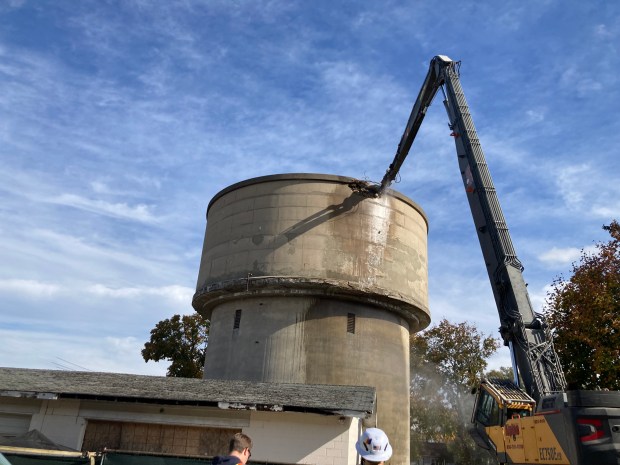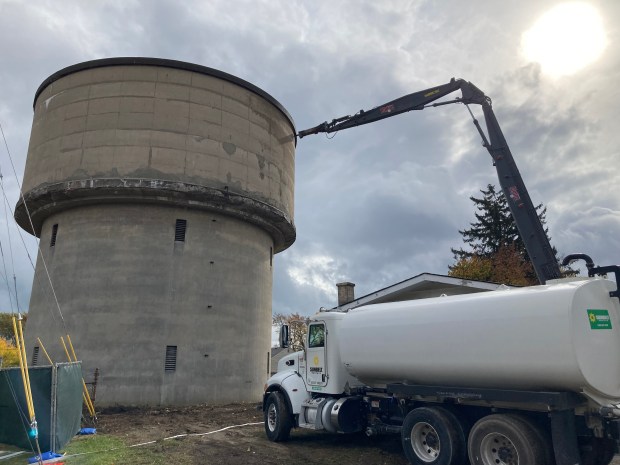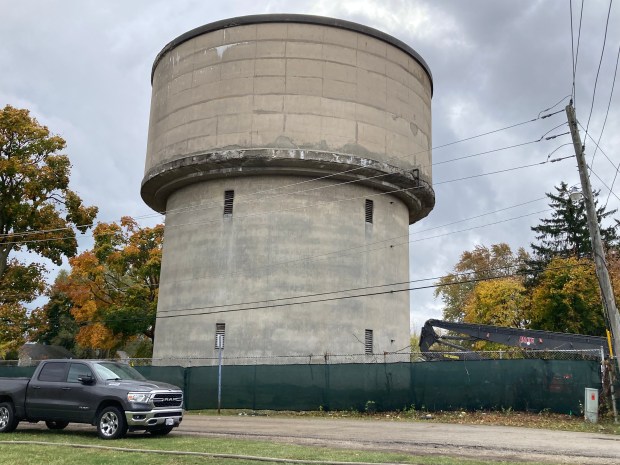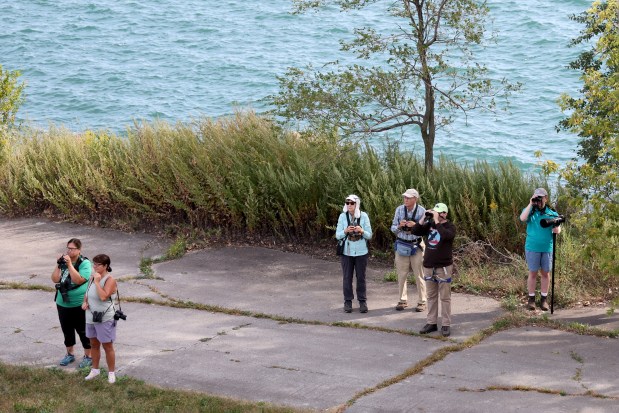An aging concrete water tower unused by the City of Waukegan for more than 50 years was becoming shelter for squatters who were breaking into the locked building. A crew is now at work demolishing it.
Mayor Ann Taylor said people were breaking into the building and making a home there as has happened in other abandoned properties around the city. This time, the structure was owned by Waukegan and city officials were free to make necessary decisions about overall welfare.
“It was not only excessive but it was getting dangerous,” Taylor said. “People were sleeping there and we decided to get it down.”
A construction crew began demolishing the 85-foot concrete tower Thursday on Keller Avenue just south of Washington Street to remove the structure eventually creating just over half an acre of vacant land as an asset for the city.
Antonio Dominguez, the city’s water plant superintendent, said it will take around a month to demolish the tower and another four weeks to remove all the debris leaving a vacant lot for future use.
Using a crane which can reach heights of 120 feet, the crew from Leopardo Construction attached an eight-foot, five-ton jackhammer device to punch a hole near the top of the tower.
Once the hole was created, Dominguez said large claws would be used to pull off the concrete and drop the debris inside the structure to avoid scattering it around the property or on neighboring land.

With the top third of the tower — which once held the water — containing a larger circumference than the bottom portion, Dominguez said most of the debris from the top would be contained in the lower portion. Once done, the entire structure will be taken down and debris removed.
After a hole was punched near the top of the tower, the jackhammer device was removed and giant claws were attached to the crane so the operator could remove large amounts of concrete and deposit them inside the empty space.
“The claws get in there and take it down bite by bite,” said Tom Sperling, Leopardo’s project superintendent at the site.
Originally built in 1943 and decommissioned in 1971, Dominguez said a much larger tower was built near Green Bay Road and Eighth Street. It is substantially more efficient and can hold 3 million gallons. The old structure held 137,000 gallons.
Though the city will have just over half an acre of vacant property as a new asset around the first of the year, Taylor said a number of possibilities must be examined before a decision is made about what to do with the land.
Adjacent to Lake Behavioral Hospital, Taylor said she wants to know what will be done with that land before the city makes decisions about its future use. At one time, the hospital considered gifting it to the not-for-profit organization Lake County United for affordable housing.

While Lake Behavioral Hospital was involved with demolishing a portion of the former St. Therese hospital, it was fined by the federal Occupational Health and Safety Administration (OSHA) for lack of precautions for asbestos removal.
Taylor said the city needs to know the status of the situation as it considers what to do with the property.
Along with the demolition, Dominguez said the city is in the process of installing new pumps and other equipment that will be more energy efficient. The plant currently pumps and processes 9 million gallons a day for city use and another million for wholesale delivery to Beach Park, Park City and Green Oaks. The full capacity is 24 million gallons.
Though the city has the capacity to more than double its production of drinking water, Taylor said the potential for additional wholesale business is in the future because significant infrastructure work would be necessary.





